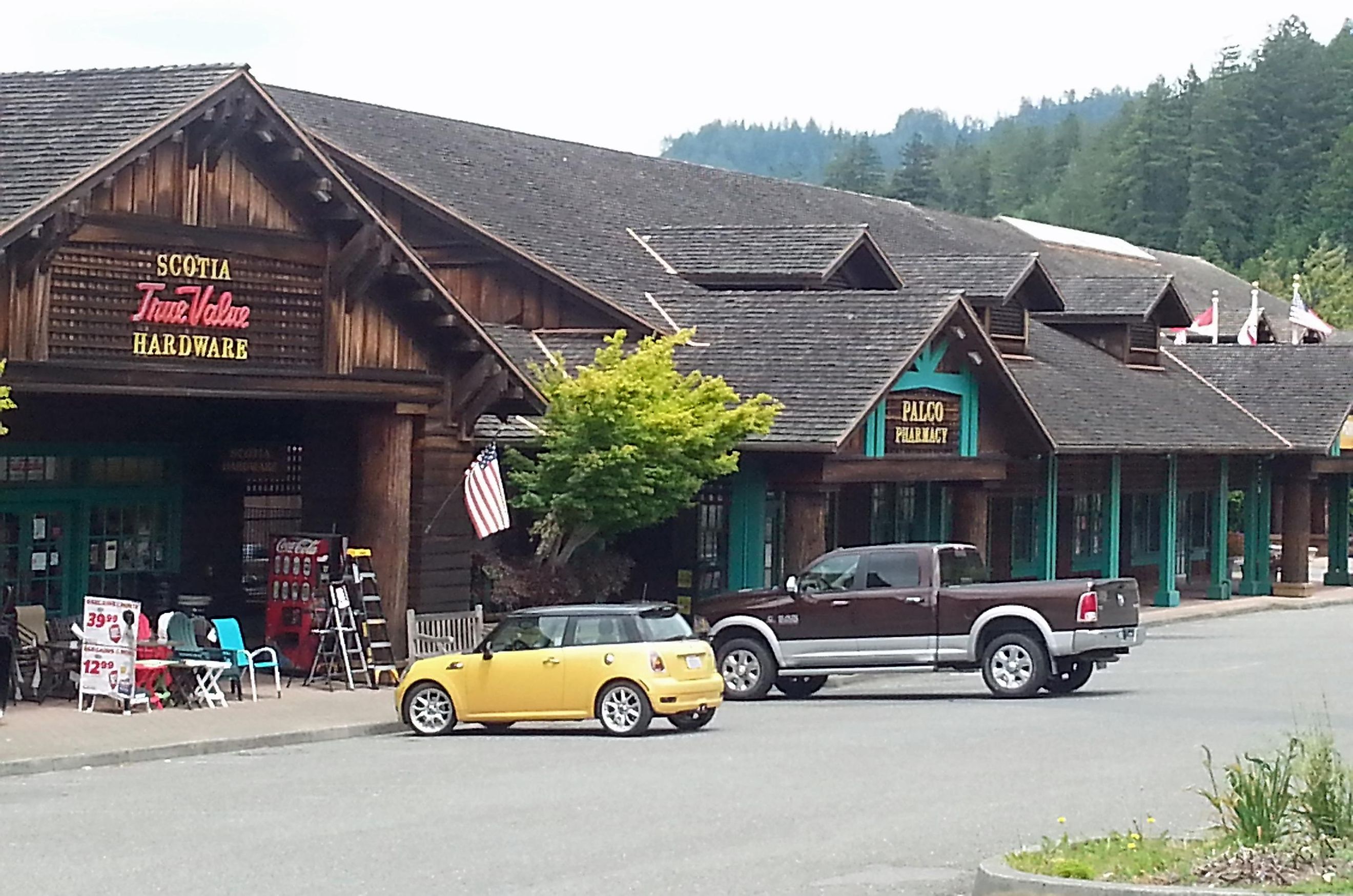
8 Offbeat Towns to Visit in Northern California
Not much is normal about NorCal. The spacious but sparsely populated region hosts a number of offbeat communities among its jagged mountains, redwood forests, and glistening coasts. These towns, with their natural and manmade mixes like Glass Beach and Bigfoot, keep locals happy and tourists coming. When Sasquatch is considered a dignitary and broken glass a landmark, you know you are entering some weird yet wondrous territory.
Boonville
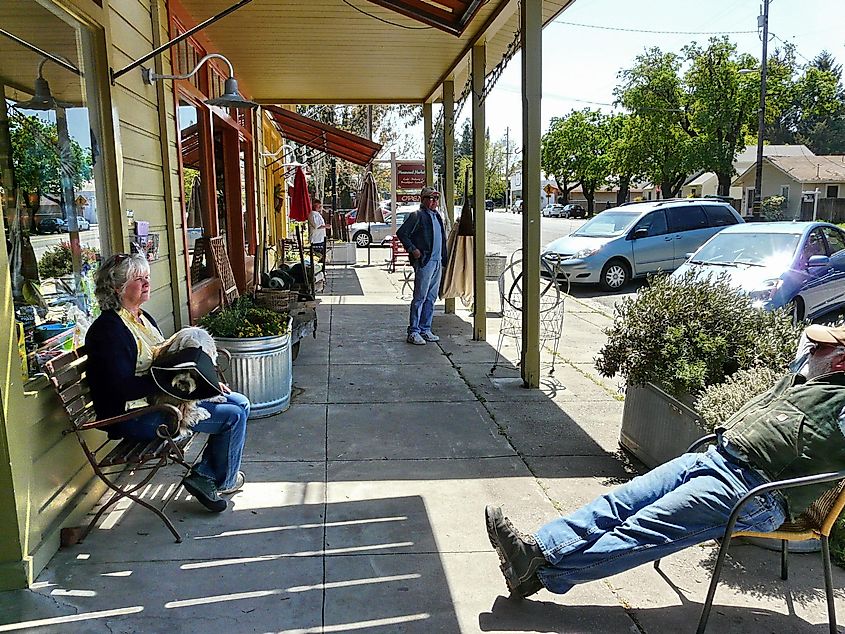
Shops in Boonville, California. By Henry Zbyszynski - Flickr, CC BY 2.0, Wikimedia Commons
Boonville, a community of just over 1,000 people in verdant Anderson Valley, is so unique it has its own language. It is called Boontling, and it developed over 100 years ago as a way for the geographically isolated townsfolk to remain linguistically isolated, making it an argot, a language used to keep outsiders from understanding. Today, Boontling is well studied but little spoken, although it is a bona fide marketing boon. You can read "Bahl Hornin'" (“good drinking”) on cans sold by the famous Anderson Valley Brewing Company. You can also see fratty shams (grapevines) at the Winter White Wine Festival, gorm gannos (eat apples) at the Mendocino County Fair and Apple Show, and have a horn (alcoholic drink) and an almittey (burp) at the 26th Boonville Beer Fest. Brightlighters (outsiders) are now welcome!
Port Costa
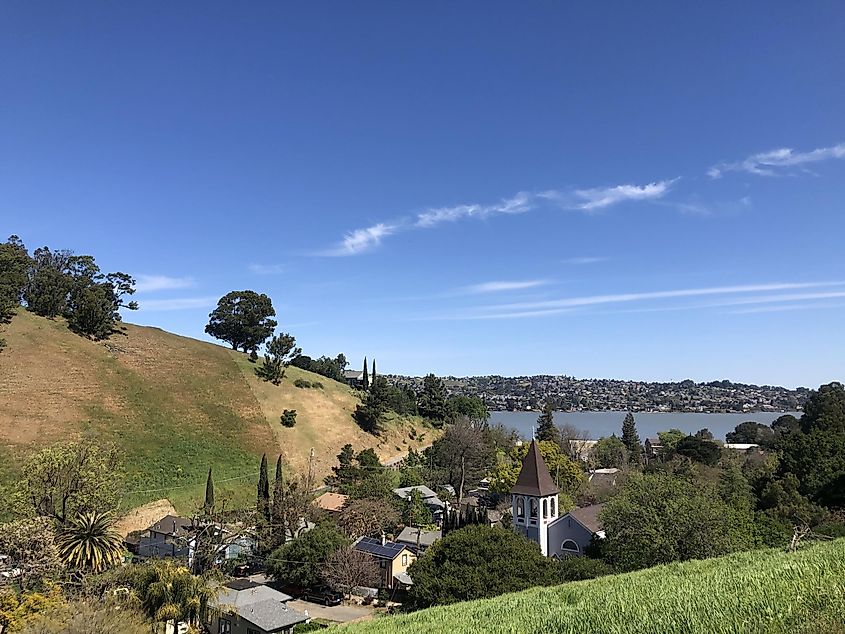
Port Costa town view from Carquinez Strait Regional Shoreline Park. By Sinjutchupti, CC BY-SA 4.0, Wikimedia Commons
Port Costa is basically one road that carries a loaded reputation. As a 19th-century transportation hub for trains and ferries, PC seems, to some, to be lost in time. As a low-population community with supposedly haunted buildings like Burlington Hotel and Port Costa School, PC is considered by others to be a literal and figurative ghost town. And as the site of Warehouse Cafe, a bar that is patronized by everyone from bikers to hikers to hipsters, PC has un-PC thrills. In aggregate, Port Costa is a quirky historical village with more imagined scares than real ones, but you can get both at Warehouse, especially with its stuffed polar bear.
Colma
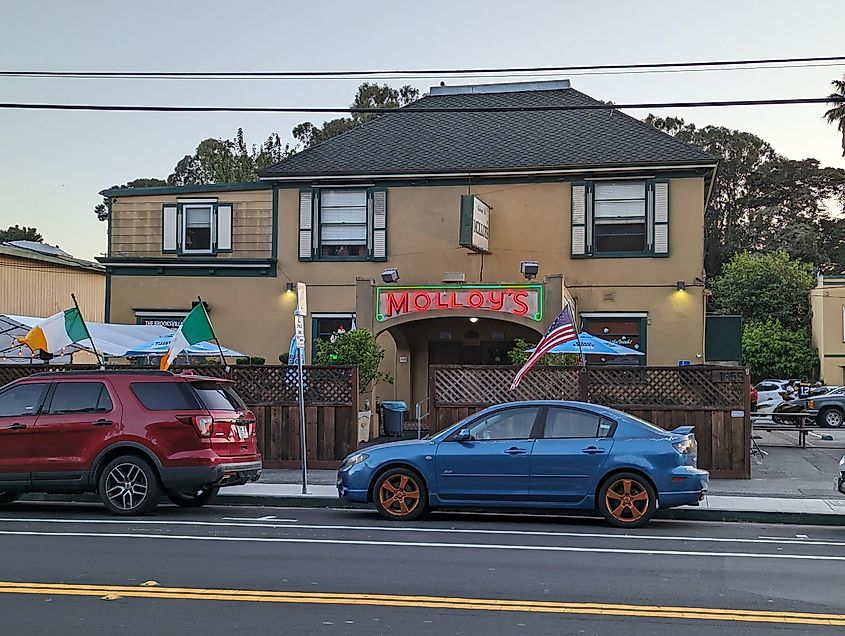
Molloy's Irish Pub in Colma, California. By Mliu92, CC BY-SA 3.0, Wikimedia Commons
Colma has perhaps the most darkly appropriate name in America. The San Mateo County community has about 1,500 living residents and 1.5 million deceased. After neighboring San Francisco banned new burials in 1900 and did a mass exodus of exhumations, Colma was the destination, becoming, according to a local historian, the only city incorporated for the express purpose of preserving corpses. With 17 cemeteries (including one for pets) and the dead outnumbering the living 1,000 to 1, Colma is a scavenger hunt for brave tourists who search out graves of legendary humans like Wyatt Earp, Joe DiMaggio, and Levi Strauss. Counted among Colma's non-morbid attractions are the Colma Museum, Lucky Chances Casino, and nearby Mussel Rock Park.
Colma's name, by the way, is coincidental. It is said to derive from the Ohlone word for "moon." Residents must get a little nervous when the colma is full.
Fort Bragg
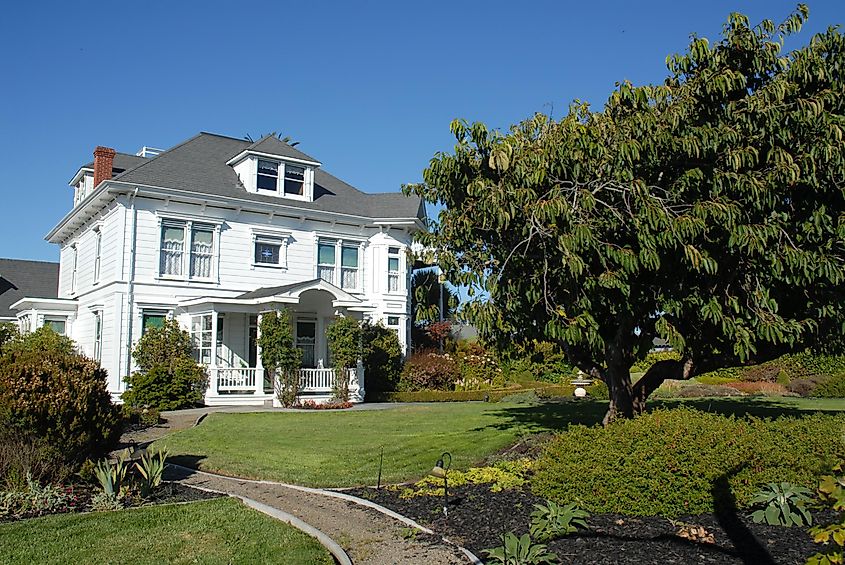
Despite its small size and relative isolation, Fort Bragg has a lot to brag about. The 7,000-person "city" about an hour from Boonville is famous for converting litter into a shimmering tourist destination. It is called Glass Beach, and it began as a dumping ground for bottles, kitchen appliances, and even cars until decades of strong waves molded the debris into beautiful, colorful sea glass. Now, the beach adjoins MacKerricher State Park and much of its glass has been taken as souvenirs. Collecting the garbage-turned-gemstones remains controversial. Also colorful but controversial is Fort Bragg's history as a military garrison named for future despised Confederate general Braxton Bragg. The only part of the original fort still standing is at 430 North Franklin Street, which was once the quartermaster’s storehouse and commissary. A purely colorful palate cleanser is Mendocino Coast Botanical Gardens, which occupies 47 acres on the south side of town.
Boulder Creek
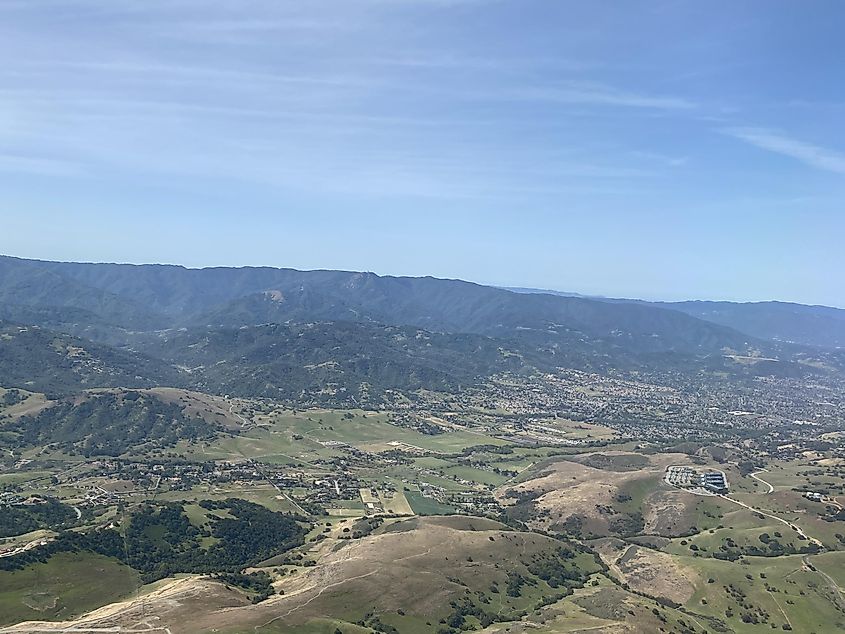
Aerial view of the Santa Cruz Mountains.
Boulder Creek is one of many unique communities in the Santa Cruz Mountains. Backwoods in both location and history, this former timber town of 5,500 is surrounded by monstrous trees in state parks and stately buildings from its logging boom. All are part of ghost-hunting lore. But most people visit Boulder Creek not for hunts but haunts, especially natural wonders like Berry Creek Falls and social hubs like Joe's Bar, The Sawmill Restaurant, and Lille æske Arthouse. They also patronize its fairs and festivals like the 4th Of July Parade & Block Party and Boulder Creek Winter Festival. It is too bad that Lumberjack Days, which hosted wacky logging competitions, no longer occurs. Perhaps if enough people visit Boulder Creek, Lumberjack Days will make a bold return.
Guerneville
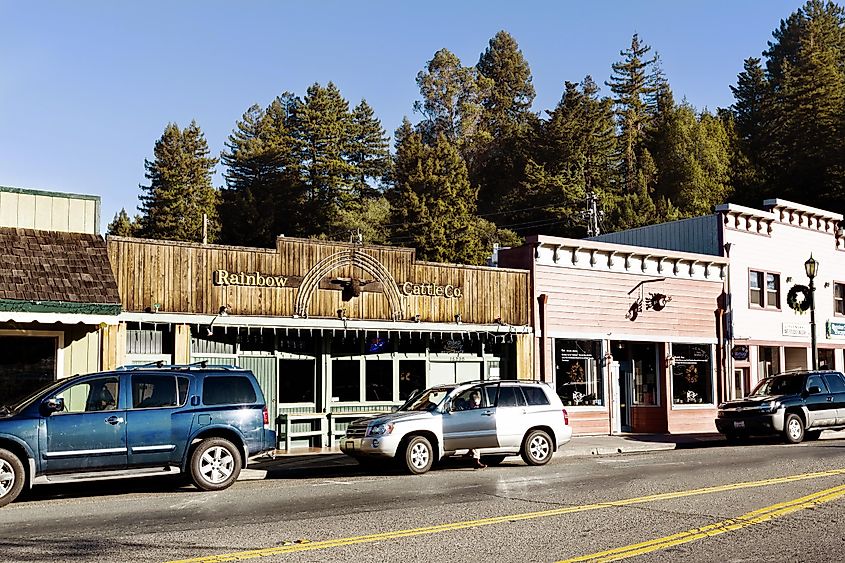
Founded by George Guerne and other loggers in the mid-19th century, Guerneville now draws even stranger groups to the NorCal woods. Every July, world leaders, businessmen, artists, and other people of power flock to Bohemian Grove, a restricted 2,700-acre campground consisting of themed lodgings, amphitheaters, and a shrine to a giant carved owl. Also, in July, thousands of LGBTQ+ people and supporters come to Guerneville for Lazy Bear Week. Bearlike activities include swimming in the Russian River.
But do not worry: even if you are not a "bear" or an owl-worshipping elite, you can have fun around Guerneville. Redwood forests and gold sand beaches offer all kinds of rustic adventures while wine tasting at Rio Crest, partying at McT's Bullpen, and shopping at Guerneville 5 & 10 titillate the commercial tourist.
Scotia

The Scotia Inn in Scotia, California. By Ellin Beltz, CC BY-SA 4.0, Wikimedia Commons
For almost 150 years, Scotia had the rare and problematic distinction of being owned by a single company. In the late 1800s, the Pacific Lumber Company (PALCO) founded the community to house and supply its workers. In the beginning, it was called Forestville. In 2008, PALCO folded, leaving the town's several hundred residents to their own devices - and the devices of an asset management firm. Although many former company towns are now ghost towns, Scotia is amid an ambitious rebuild. Humboldt Redwoods State Park, Humboldt Redwood Company Fishery Exhibit, Winema Theater, and Scotia Lodge are helping the unique NorCal community find its identity along historic lines.
Willow Creek
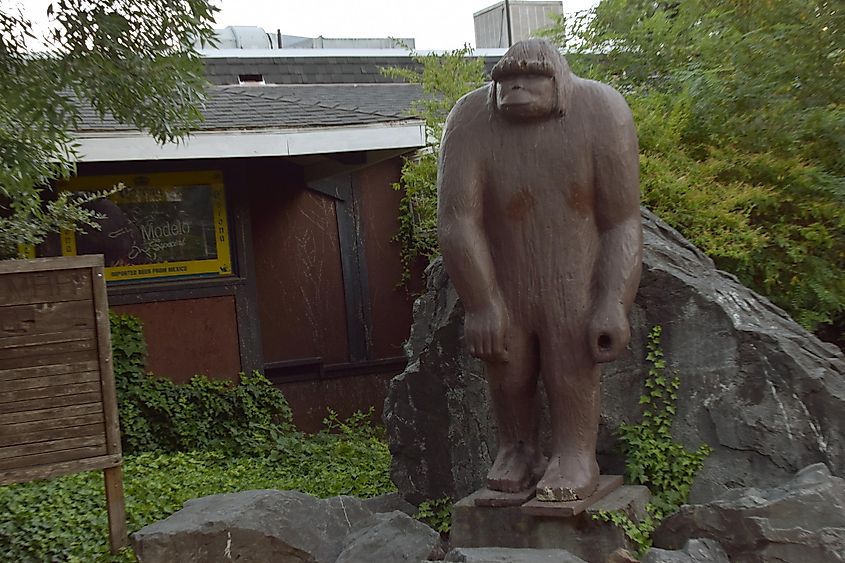
In 1967, Roger Patterson and Robert Gimlin filmed a sizeable bipedal ape in extreme northern California. After reeling, they allegedly went reeling down the highway for 50 miles, their first stop in the town of Willow Creek. The footage changed Patterson and Gimlin's life, as well as Willow Creek's, for the small community is considered the Bigfoot capital of the world. Its carbon footprint comprises Bigfoot Motel, Bigfoot Steakhouse, and the Bigfoot Collection at Willow Creek-China Flat Museum, outside of which stands a 20-foot Bigfoot statue carved from one of California's iconic redwoods. Moreover, Willow Creek hosts Bigfoot Daze, a Sasquatch-themed festival held each July.
Society and nature are inseparable in Northern California. This is embodied by towns like Boonville, Port Costa, Colma, Fort Bragg, Boulder Creek, Guerneville, Scotia, and Willow Creek, where nature not only shapes industry and recreation but language, folklore, LGBTQ+ retreats, and cryptic ceremonies for world leaders. Owls, bears, and apes mean more in NorCal than elsewhere. It is time for a symbolic safari in the natural outdoors.











